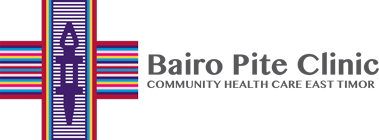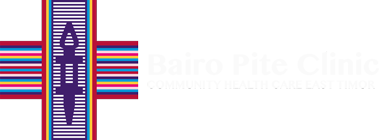THE PORTUGUESE COLONIZATION
 The Portuguese were the first Europeans to actively begin colonising Timor-Leste, having first arrived around the beginning of the sixteenth century. Upon their arrival, the country was divided into an assortment of tiny kingdoms, the largest of which was known as Wehale. Originally drawn by the abundance of sandalwood, they eventually began to exhaust the island’s wealth in the timber, and so, around three hundred years later, began farming coffee, sugar cane, and cotton in Timor-Leste.
The Portuguese were the first Europeans to actively begin colonising Timor-Leste, having first arrived around the beginning of the sixteenth century. Upon their arrival, the country was divided into an assortment of tiny kingdoms, the largest of which was known as Wehale. Originally drawn by the abundance of sandalwood, they eventually began to exhaust the island’s wealth in the timber, and so, around three hundred years later, began farming coffee, sugar cane, and cotton in Timor-Leste.
The Portuguese also brought with them Dominican priests and the Catholic faith, which remains to this day as the largest religion. The eastern half of the island was weakly held by the Portuguese, while the western half was the dominion of the Dutch East India Company. Portuguese military expansions began in 1642, and though their control over the island was anything but certain, in 1702 they renamed the area Portuguese Timor. The border between the Dutch and Portuguese sides of the island was not solidified until 1916, when The Hague made an official ruling.
PORTUGUESE Influence wanes
As of the end of 1960, the United Nations declared Timor-Leste to be under Portuguese control, but, through a series of resolutions from 1962 to 1973, the UN General Assembly recognised the Timorese right to self-determination. The successive regimes of Salazar and Marcelo Caetano did not recognise this right.
1974 saw democratic revolution in Portugal. The new Portuguese government, under the direction of Governor Mario Lemos Pires, committed wholeheartedly to allowing all Portuguese colonies the right to determine their own political destiny.
As such, three main parties came to control the East Timorese political spectrum. These were:
- The Timorese Democratic Union (UDT), which felt integration into the Portuguese community was the way forward.
- The Revolutionary Front for an Independent East Timor (FREITLILIN), which supported the idea of independence.
- The Popular Democratic Association of Timor (APODETI), which believe assimilation into the Indonesian community while retaining some level of sovereignty was the best course.
The results of elections showed the that they were uninterested in assimilating into Indonesia, due in no small part to cultural differences.
Tension between UDT and FRETILIN reached a boiling point in mid-1975, and in August 1975, UDT staged a coup in the capital city Dili and a small-scale civil war broke out with between 2000-3000 people dead. The Portuguese government was forced to the nearby island of Arturo.
FRETILIN prevailed, forcing the pro-Indonesian forces into Indonesian territory. This led to a series of incursions into Timorese territory by Indonesian forces and UDT militia, including the infamous Balibo raid, where five Australian journalists were killed.
The video above features Greg Shackleton, one of the Balibo five reporting from Timor in 1975. He was killed soon after shooting this video.
FREEDOM THWARTED
Late 1975 saw FREITILIN officially declare Timorese independence in an attempt to gain international support against Indonesian incursions. However this was a move that was not recognised by Portugal, Indonesia, or Australia.
This decision led to war: Indonesia, under the Suharto government, invaded and declared the region a province of Indonesia. This was at least in part due to Indonesian government’s fear and hatred for FREITILIN’s perceived communist leanings. They had the support of the United States Government, who considered the socialist tendencies of FREITILIN to be a potential threat.
The Whitlam Government, which had close ties to Suharto, also feared that an independent East Timor would likely provoke instability in the region.
An Australian news report from before the Indonesian Invasion
The invasion began in December, and the arms used by the Indonesian government for its sea and air invasion were supplied almost entirely by the US Government, though both President Ford and Henry Kissinger believed in silence on the issue publicly. In the same way, Australian political leaders objected publicly to the invasion but behind closed doors promised that no practical action would be taken.
ANOTHER HEAVY PUNISHMENT
In less than three months, the Indonesian invasion cost 60,000 East Timorese lives. These numbers are terrifying by any standards, but when your population is less than 700,000, they become even more abhorrent. A puppet government was installed, and an attempt by the United Nations Secretary General’s representatives to visit FREITILIN areas of the country was thwarted by the Indonesians. Journalists were forbidden on the island, leading it in in some historical circles to be referred to as the forgotten conflict. The Portuguese language was also forbidden.
In less than three months, the Indonesian invasion cost 60,000 East Timorese lives.
The effect of this on the East Timorese community can still be felt today. The people of Timor-Leste weren’t just robbed of their freedom and lives; they were robbed of a sense of cultural identity. Throughout the years of the occupation, the East Timorese people rejected the Indonesian government’s ruling; having fought so long for their independence, they were desperate to not give it up so soon after attaining it.
Reports differ upon the amount of East Timorese lives lost, but between 1974 and 1994, there were over one hundred thousand deaths, some caused by killings but most caused through hunger and illness. It is worth noting that the occupation was never recognised by the Portuguese government, the former occupants of the land, nor the United Nations.
A TURNING POINT: THE SANTA CRUZ MASSACRE
The turning point for this occupation came in 1991, when a few thousand students staged a non-violent protest at Santa Cruz Cemetery in Dili, where they protested the killing of a fellow student and independence activist. The protest eventually turned into a march, and unlike many events in the region at the time, was covered by the Western media.
The cameras were rolling when the Indonesian military opened fire on the protestors, killing more than 300 innocent people.
To make matters worse for the Indonesian occupation, in 1996 Bishop Ximenes Belo and Jose Ramos Horta, were award the Nobel Peace Price for their work in East Timor. Ramos Horta had spent years lobbying the United Nations to help his embittered countrymen, and would eventually become the second president of independent Timor-Leste.
Beginning in 1997, Indonesia faced an economic crisis, and President Suharto was forced to resign, with his vice president, B.J. Habibie taking over. Strong international pressure forced him to allow the East Timorese to choose their own destiny.
FREE AT LAST
In 1999, with the help of U.N. General Secretary Kofi Annan, the East Timorese people were allowed to choose via referendum their fate. More than 80% of the country voted in favour of an independent Timor-Leste. Unfortunately, this was not the end of the atrocities, as Indonesian armed forces hit back brutally, with may of the East Timorese population being displaced and forced to relocate in West Timor and the surrounding islands, while still others hid in the mountains. Around two thousand people were killed. Over eighty per cent of the buildings in the nation were destroyed. Trucks were stolen or destroyed.
The United Nations authorised Australia with the help of the United States to bring peace and security back to the island, along with humanitarian efforts. By October 1999, the U.N. had established a large-scale peacekeeping operation to oversee the East Timorese independence.
On the 30th of August 2001, the people of Timor-Leste held the first free elections in 24 years. Resistance leader Xanana Gusmao, released from Indonesian prison, was chosen to be the first elected President of an independent Timor-Leste.
On the 20th of May 2002, the United Nations officially relinquished control of the country, making it the first new country of the third millennium, and the world’s newest democracy. The struggle for independence, national and cultural identity and freedom had been long, bloody, and destructive, but finally, the people had grasped the right to govern themselves.







 The Portuguese were the first Europeans to actively begin colonising Timor-Leste, having first arrived around the beginning of the sixteenth century. Upon their arrival, the country was divided into an assortment of tiny kingdoms, the largest of which was known as Wehale. Originally drawn by the abundance of sandalwood, they eventually began to exhaust the island’s wealth in the timber, and so, around three hundred years later, began farming coffee, sugar cane, and cotton in Timor-Leste.
The Portuguese were the first Europeans to actively begin colonising Timor-Leste, having first arrived around the beginning of the sixteenth century. Upon their arrival, the country was divided into an assortment of tiny kingdoms, the largest of which was known as Wehale. Originally drawn by the abundance of sandalwood, they eventually began to exhaust the island’s wealth in the timber, and so, around three hundred years later, began farming coffee, sugar cane, and cotton in Timor-Leste.

![Indonesian officials comander, 7 of Dec 1975 [Includes] Dading Kalbuadi [at left] AMRT: Military operations during the Indonesian invasion of East Timor.](/wp-content/uploads/2015/07/invasion_1.jpg)




